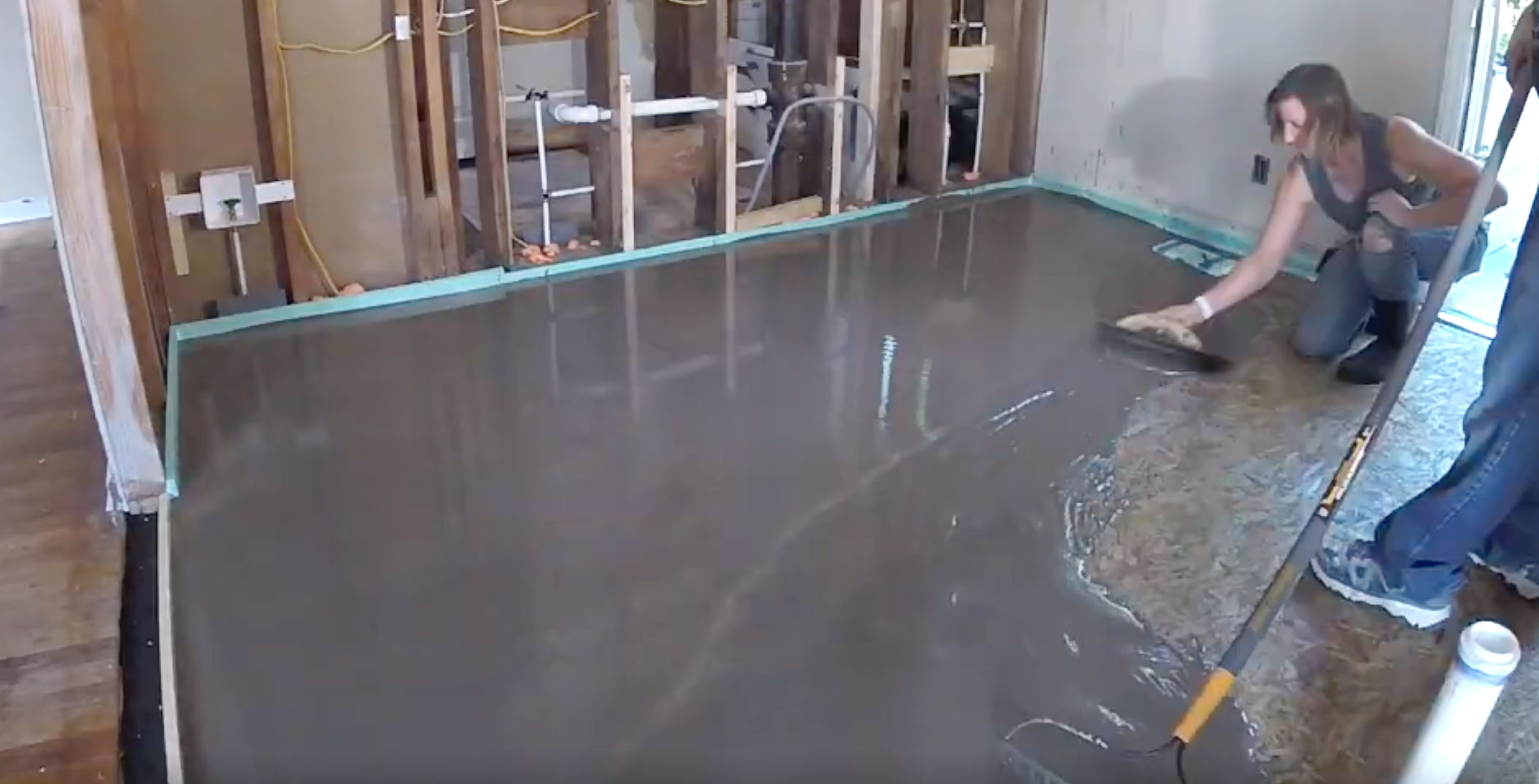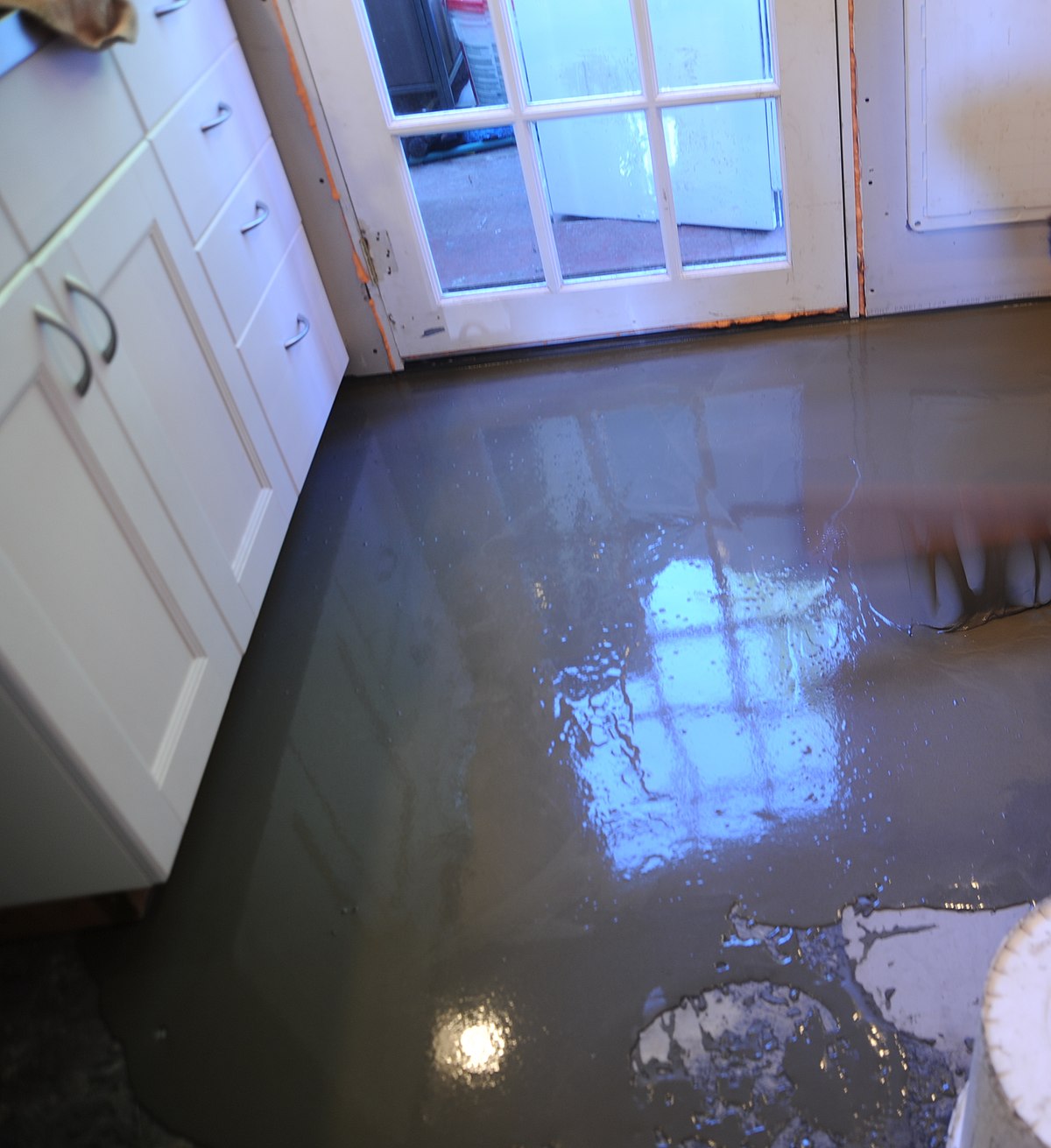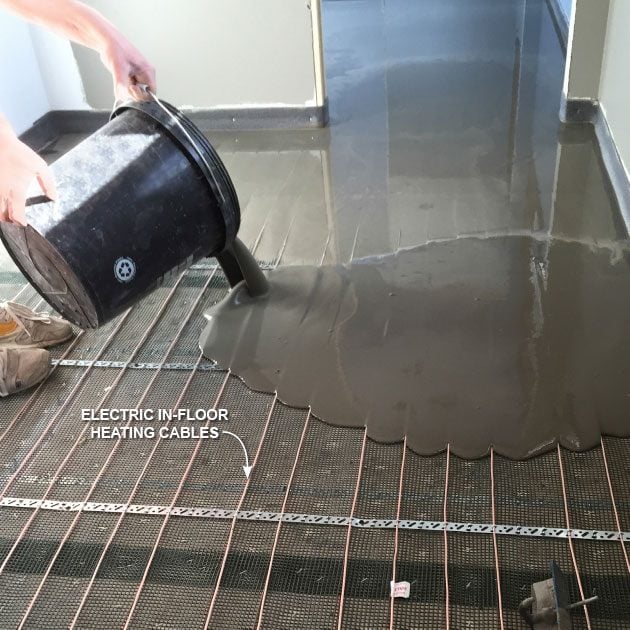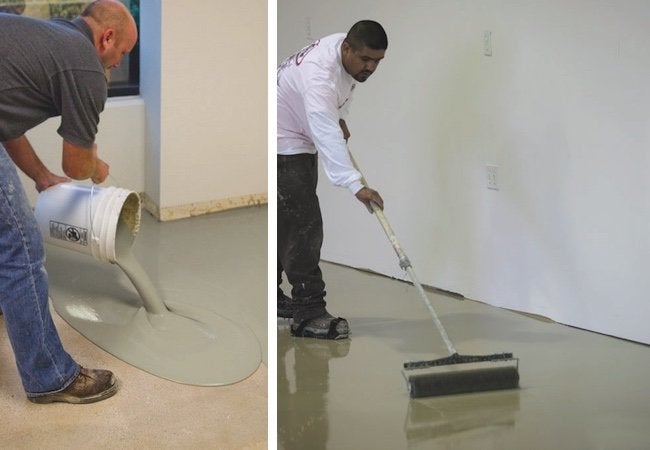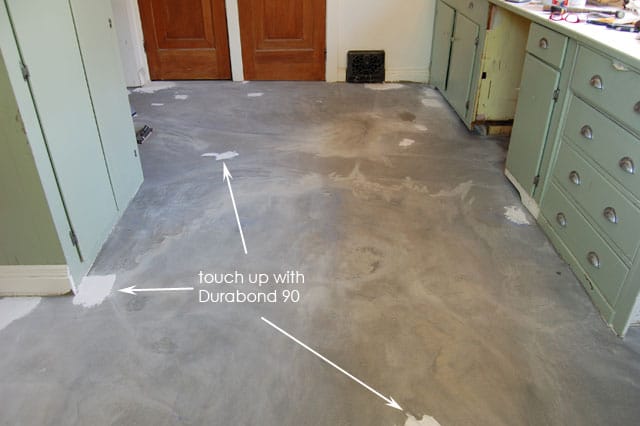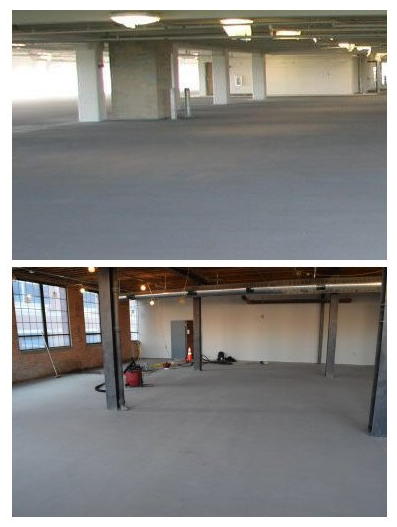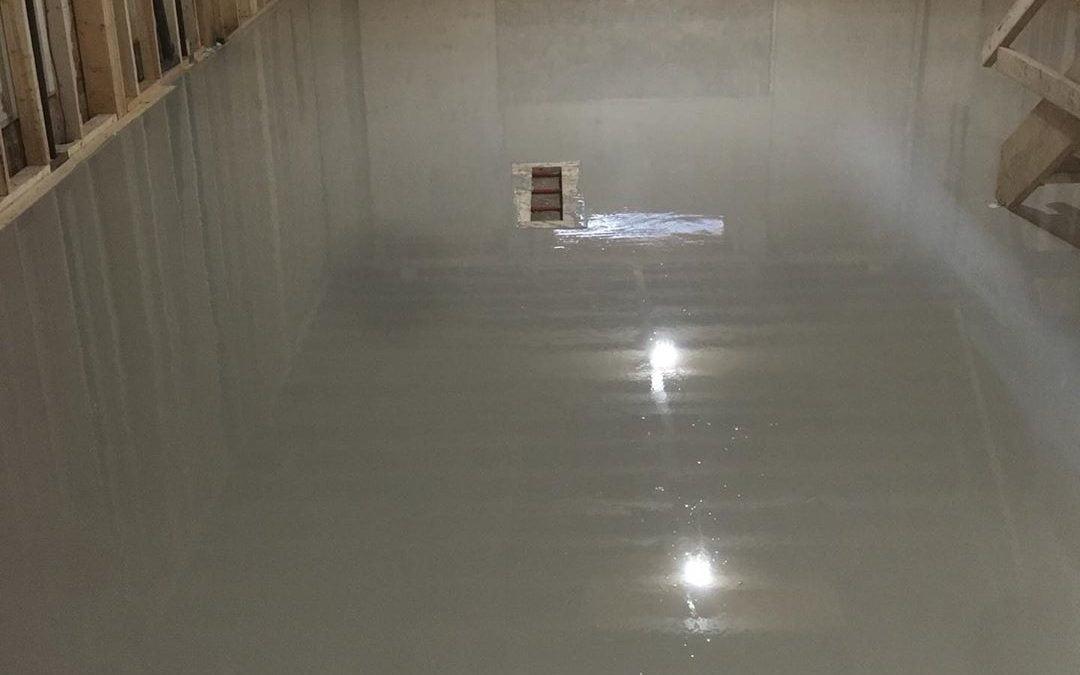Understanding Self-Leveling Compound
Self-leveling compound is a versatile and popular material used for repairing and leveling uneven garage floors. It is a cement-based mixture that can be easily poured onto the floor surface, spreading and leveling itself to create a smooth and even finish. Let’s talk about the benefits, applications, and considerations of using self-leveling compound for garage floor repairs.
- What is a Self-Leveling Compound? Self-leveling compound is a cementitious mixture that contains polymer additives. These additives improve the flowability and self-leveling properties of the compound. When mixed with water, the compound forms a fluid-like consistency that can be poured and spread evenly over the floor. It is designed to fill in low spots, cracks, and imperfections in the concrete, resulting in a level and smooth surface.
- When to Use Self-Leveling Compound for Garage Floors? Self-leveling compound is an excellent choice for addressing minor imperfections and leveling uneven garage floors. It is particularly useful for floors with low spots, small cracks, or uneven surfaces caused by settling or wear and tear over time. It can also be used to prepare the garage floor surface before installing tiles, epoxy coatings, or other floor coverings.
- Preparing the Garage Floor for Self-Leveling Compound Application. Before applying a self-leveling compound, it is crucial to prepare the garage floor properly. Start by cleaning the floor thoroughly, and removing any dirt, grease, or debris. Patch any larger cracks or holes with an appropriate concrete patching material. Fill any expansion joints or control joints with foam backer rods to prevent the compound from seeping into these areas. Finally, ensure that the floor surface is dry and free of moisture.
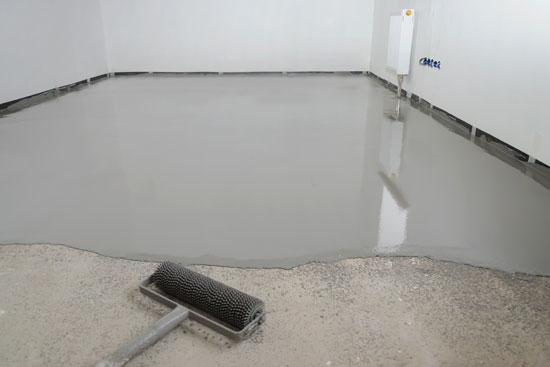
Applying Self-Leveling Compound:
To apply self-leveling compound on your garage floor, follow these step-by-step instructions:
- Prepare the compound according to the manufacturer’s instructions, mixing it with water in a clean bucket.
- Pour the compound onto the floor in a thin stream, starting from one corner and working your way towards the exit.
- Use a gauge rake or a squeegee to spread the compound evenly across the floor surface.
- se a spiked roller to remove any air bubbles and ensure proper adhesion of the compound to the floor.
- Allow the compound to dry and cure according to the manufacturer’s instructions before applying any floor coverings or coatings.
After applying a self-leveling compound, it is important to let it dry and cure properly. The drying time can vary depending on the product and environmental conditions. During this time, avoid walking or placing heavy objects on the freshly applied compound. Once fully cured, the compound will provide a smooth and level surface ready for further treatment or use.
Benefits of Using Self-Leveling Compound for Garage Floor Repair
When it comes to repairing garage floors, self-leveling compound offers numerous benefits over other traditional methods. Let’s see the advantages of using self-leveling compound for garage floor repair.
Easy Application: One of the primary benefits of using self-leveling compound is its ease of application. Unlike other floor repair methods that require extensive manual leveling and smoothing, self-leveling compound does the work for you. Simply pour the compound onto the floor and let it spread and level itself, resulting in a smooth and even surface.
Time Efficiency: Self-leveling compound is a time-efficient option for garage floor repair. It requires less time and effort compared to alternative methods such as grinding or patching. With self-leveling compound, you can quickly level your garage floor and move on to the next steps of your project.
Cost-Effectiveness: In terms of cost, self-leveling compound is an economical choice for garage floor repair. While the initial cost of the compound may vary depending on the brand and quantity required, it eliminates the need for expensive equipment or professional services. By opting for self-leveling compound, you can save money while achieving professional-looking results.
Versatility: Self-leveling compound is a versatile material that can be used for various garage floor repairs. Whether you need to level low spots, fill cracks, or even out the surface before applying a floor covering, self-leveling compound can handle a range of repair needs. Its versatility makes it a go-to choice for many DIY enthusiasts and professionals alike.
Improved Durability: Applying self-leveling compound to your garage floor can enhance its durability and longevity. The compound fills in cracks and imperfections, creating a solid and stable surface. This helps to prevent further damage and wear, ensuring that your garage floor remains in excellent condition for years to come.
Common Mistakes to Avoid When Using Self-Leveling Compound on Garage Floors
While self-leveling compound is a convenient and effective solution for garage floor repair, there are some common mistakes that people often make during the application process. By being aware of these mistakes, you can avoid potential issues and ensure a successful garage floor repair project.
Insufficient Surface Preparation: One of the most common mistakes is inadequate surface preparation. Before applying self-leveling compound, it is crucial to clean the floor thoroughly, repair any cracks or holes, and ensure the surface is dry. Failure to properly prepare the floor can result in poor adhesion and an uneven finish.
Incorrect Mixing Ratio: Each brand of self-leveling compound may have specific mixing instructions. It is essential to follow the manufacturer’s guidelines regarding water-to-compound ratio. Adding too much or too little water can affect the flow and leveling properties of the compound, leading to an unsatisfactory result.
Not Using a Primer: Using a primer before applying self-leveling compound is often overlooked. A primer helps to improve adhesion between the compound and the garage floor. It is especially important for porous or smooth surfaces. Applying a primer can enhance the bond and ensure a more durable and long-lasting repair.
Pouring Too Quickly: When pouring self-leveling compound, it is important to control the flow rate. Pouring too quickly can result in excess compound accumulating in one area, leading to uneven leveling and potential cracking. Take your time and pour the compound in a steady, controlled manner.
Overworking the Compound: Once the compound is poured and spread, avoid overworking it. Excessive troweling or smoothing can disrupt the leveling process and create an uneven finish. Use a gauge rake or squeegee to spread the compound evenly, and let it self-level as intended.
Alternatives to Self-Leveling Compound
While self-leveling compound is a popular choice for garage floor repair, there are alternative methods available that may better suit your specific needs. In this article, we will explore some alternatives to self-leveling compounds and their applications for garage floor repair.
Concrete Patching: Concrete patching is a common alternative to self-leveling compounds for localized repairs. It involves filling cracks, holes, or damaged areas with a pre-mixed concrete patching material. This method is suitable for small repairs and can be used to level uneven spots on the garage floor.
Grinding or Polishing: If your garage floor has significant unevenness or high spots, grinding or polishing the surface may be a viable option. This method involves using a concrete grinder or polisher to remove the high spots and level the surface. While it requires more equipment and expertise, it can result in a smooth and even garage floor.
Epoxy Coatings: Epoxy coatings are a popular choice for both garage floor protection and repair. These coatings consist of a two-part epoxy mixture that is applied to the floor surface. Epoxy coatings can hide minor imperfections and provide a durable and attractive finish. They are suitable for both small repairs and full floor coatings.
Concrete Overlays: Concrete overlays are another alternative to self-leveling compounds for garage floor repair. This method involves applying a thin layer of fresh concrete over the existing floor surface. Concrete overlays can be customized with various finishes and designs, providing a decorative and renewed appearance to your garage floor.
Rubberized Mats or Tiles: For a non-invasive and temporary solution, rubberized mats or interlocking tiles can be used to cover an uneven garage floor. These mats or tiles provide a cushioned surface and can be easily installed and removed. While they do not repair the underlying floor, they offer a quick and cost-effective way to improve the appearance and functionality of your garage.
Leveling a Concrete Floor – Bob Vila
How to use self-leveling on large floor areas
Self-Leveling Concrete – Poured Floor Specialized Contractors
How to pour self levelling concrete yourself.
Self-Leveling Concrete Can Save Both Time and Money – Concrete Decor
THE EXPANDING ROLE OF SELF-LEVELING OVERLAYS IN DECORATIVE
Self-Leveling Concrete Flooring Underlayment Floor Leveling
Related Posts:
